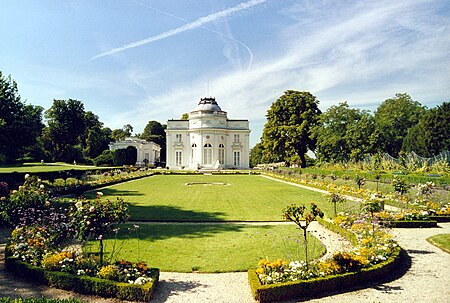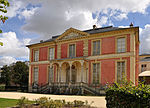Château de Bagatelle
Buildings and structures in the 16th arrondissement of ParisChâteaux in ParisChâteaux with formal gardens in FranceFrench landscape gardensGardens in Paris ... and 4 more
Historic house museums in ParisOlympic polo venuesRose gardens in FranceVenues of the 1924 Summer Olympics

The Château de Bagatelle is a small Neoclassical style château with several small formal French gardens, a rose garden, and an orangerie. It is set on 59 acres of gardens in French landscape style in the Bois de Boulogne, which is located in the 16th arrondissement of Paris. There is also a Château de Bagatelle located near Abbeville in northern France.
Excerpt from the Wikipedia article Château de Bagatelle (License: CC BY-SA 3.0, Authors, Images).Château de Bagatelle
Jardin Francais, Paris 16th Arrondissement (Paris)
Geographical coordinates (GPS) Address External links Nearby Places Show on map
Geographical coordinates (GPS)
| Latitude | Longitude |
|---|---|
| N 48.871666666667 ° | E 2.2472222222222 ° |
Address
Château de Bagatelle
Jardin Francais
75016 Paris, 16th Arrondissement (Paris)
Ile-de-France, France
Open on Google Maps







